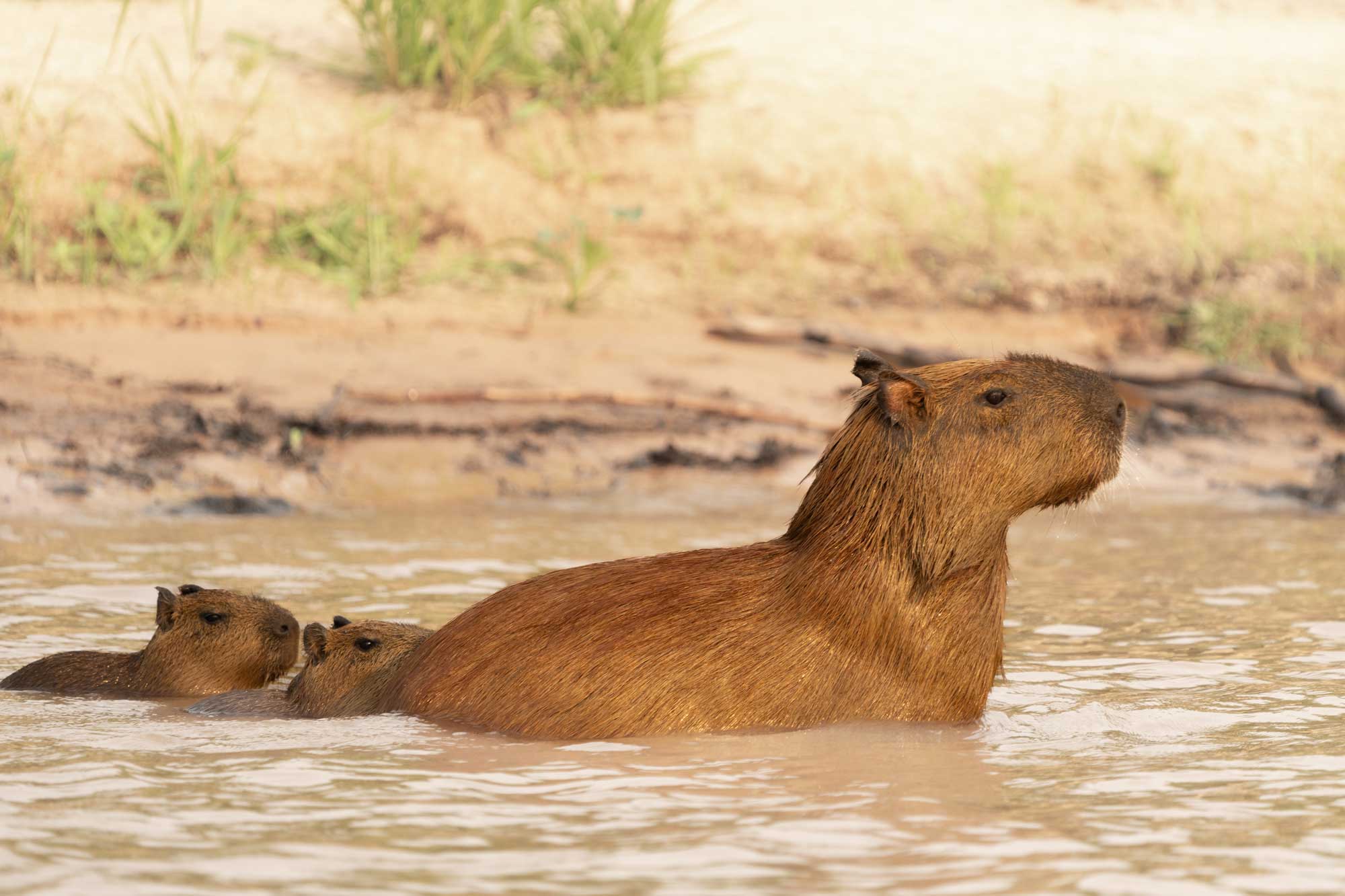Wild Relatives: The capybara

Editor’s note: Our Wild Relatives story series will explore the connections between our local wildlife species and related animals from around the globe. By learning about these exotic species, we hope to foster appreciation for the remarkable creatures that live in our backyards and neighborhoods.
What's the first animal that comes to mind when you think of a rodent? A mouse or a rat? Maybe a pet like a hamster or a gerbil?
When we think about rodents, we usually think first of small creatures, but not all rodents are small. A squirrel is a rodent, and they are certainly larger than mice and gerbils. Muskrats are rodents too. Even big beavers are rodents, but they aren't the largest rodent of all. That title goes to the capybara, a curious looking animal that can grow to be twice the size of a beaver!
So just how big is that, you may be wondering. When fully grown, capybaras can be 4 feet long and 2 feet tall at the shoulder, and they can weigh more than 100 pounds, according to the Rainforest Alliance. That's a lot bigger than their closest rodent relatives — guinea pigs and rock cavies.
Water lovers
Capybaras are certainly much larger than guinea pigs, but otherwise you can see the resemblance between these creatures. But while guinea pigs are land dwellers, capybaras love life in the water — something they have in common with their beaver relatives.
Capys, as they are called for short, live in Central and South American countries including Argentina, Brazil, Colombia, Guyana, Panama, Peru, Venezuela, Paraguay and Uruguay, the Rainforest Alliance reports. They are semiaquatic and need water to survive, so they live near lakes, ponds, rivers, marshes and swamps.
Water is essential for capybaras because they have dry skin and must go into the water to keep it moist and healthy. They can also enter the water to escape from dangers, including predators like jaguars, anacondas and caimans. They can remain underwater for as long as five minutes, which isn't quite as long as a beaver, which can hold its breath for up to 15 minutes.
To help them get around in water, they have webbed feet that allow them to swim. These creatures also share some common behaviors and adaptations with other animals. For starters, like pigs, they wallow in mud and shallow water to keep cool when daytime temperatures are hot, according to the San Diego Zoo. And like hippos, their eyes, ears and nostrils are located toward the top of their heads so they can keep just the top of their heads above water and keep their bodies safe in the water below.
An interesting diet
Like all rodents, capybaras' teeth grow continuously, National Geographic reports. To prevent their teeth from getting too long, they must graze on food regularly. They are herbivores, and they mainly eat aquatic grasses and plants as well as vegetation near shorelines. An adult capybara can eat between 6 pounds and 8 pounds of grass each day!
Besides grasses and other vegetation they also include something rather unusual in their diet: their own feces. They eat their poop because the grasses they eat are hard to digest, and this allows them to digest them twice. They will eat their feces containing partially digested vegetation in the morning, when it is high in protein from the microbes it contains from what they ate the day before, according to National Geographic.
Capybaras live in wet, humid environments, but during dry spells the grasses and aquatic plants they usually eat aren't as readily available. During these dry periods, they will switch to eating grains as well as fruits and vegetables like melons and squash, the San Diego Zoo reports.
Capybara clans
Capybaras can lead solitary lives, but they normally live in family groups, with a typical group including a dominant male along with several females and subordinate males, the zoo reports. Groups typically number about 10, but during the wet season multiple groups may join together to form groups with as many as 40 capybaras.
The animals communicate with one another in a number of ways, including chirps, whistles, barks and even purrs, according to the Rainforest Alliance. They also use their scent glands to mark their territory.
Female capybaras have one litter of four or five babies, called pups, each year. Once the pups are old enough to move with their family group, the adults collectively keep an eye on the young capys to keep them safe from predators. While adult capybaras have few predators — namely just jaguars — pups can be hunted by other animals, including snakes and even large birds like the harpy eagle.
Capybaras have only a few natural predators in the wild, but they are also hunted by humans, who hunt them for their skin or, in some places, as a food source, National Geographic reports. In some places, local populations of capys have disappeared because of hunting, but overall their population is considered stable across their range.
